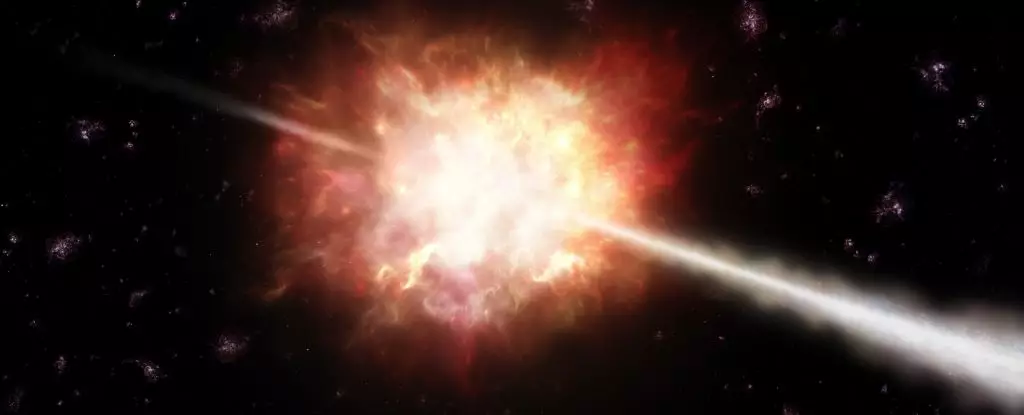The Universe is a vast and mysterious place, with many unanswered questions about its origins and composition. One of the key puzzles scientists have been trying to solve is how the heavy elements in the Universe were formed. While stars can produce elements as heavy as iron through nuclear fusion, the creation of even heavier elements requires a different process. One potential candidate for this process is a gamma-ray burst (GRB) – the most powerful explosion in the Universe.
Gamma-ray bursts are classified into two categories: long bursts and short bursts. Long GRBs are believed to be associated with the deaths of massive, fast-rotating stars, while short bursts are thought to occur during collisions between neutron stars. In 2017, a significant event known as GRB 170817A provided evidence for the link between short GRBs and the production of heavy elements. The detection of a kilonova at the location of the GRB revealed the creation of heavy elements during the explosion, shedding light on the mechanisms involved.
The rapid neutron-capture process, or r-process, is a mechanism by which heavy elements are formed by the capture of neutron particles in a short period of time. This process leads to the creation of elements beyond iron in the periodic table. Gamma-ray bursts are believed to provide the right conditions for the r-process to occur, including high density, high temperature, and ample free neutrons. The kilonova associated with GRB 170817A demonstrated how the r-process could produce heavy elements in the Universe.
Recent studies have explored the role of long gamma-ray bursts in the production of heavy elements. GRB 221009, also known as the BOAT, was identified as the brightest GRB ever recorded. Despite its extreme brightness, observations conducted by the James Webb Space Telescope revealed that the BOAT was caused by a relatively average supernova explosion. The absence of heavy elements produced by the r-process in the aftermath of the BOAT raised questions about the role of long GRBs as a source of heavy elements in the Universe.
The findings from studies on gamma-ray bursts suggest that there may be other sources responsible for the abundance of heavy elements in the Universe. While short GRBs have shown potential for producing heavy elements through the r-process, long GRBs like the BOAT have raised doubts about their contribution to element formation. Further research is needed to identify alternative sources of heavy elements and unravel the mysteries of the Universe’s composition.
Gamma-ray bursts represent fascinating cosmic events that have the potential to influence the creation of heavy elements in the Universe. While short GRBs have demonstrated the ability to produce heavy elements through the r-process, the role of long GRBs in element formation remains uncertain. Continued exploration and observation of these phenomena will be crucial in advancing our understanding of the origins of heavy elements and the mysteries of the Universe.


Leave a Reply